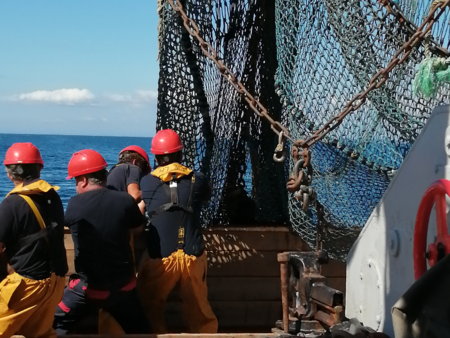SYMBIOTOX (2022-2027)
Coordination Ifremer | Type de projet | Financeur | Durée du projet | Lien |
A. Bertucci (CCEM, Chaire Bleue Ifremer)) | Chaire Bleue Ifremer | Ifremer | 2022-2027 |
The microbiome has recently become a growing interest in ecological and evolutionary research and there is an increasing appreciation that symbiotic microbes (microbiota) are an essential part of the holobiont’s (host + symbionts) phenotype from pathogen susceptibility, immunity, nutrient acquisition and metabolism, range expansion and response to stressful environments. The microbiome plasticity may contribute to host acclimation or even population-level adaptation to environmental change. Moreover, disturbances of host-microbiome interactions (dysbiosis) may result in the onset of various diseases. It is then critical to understand the factors that can maintain or alter the microbiome’s integrity.
Aquatic ecosystems are contaminated by a high diversity of chemicals from various nature and origins. Their toxicity in aquatic organisms have been quite well investigated. Studies showed that environmental toxicants can directly harm the components of the microbial community associated with eukaryotes but can also be modified by microbes to be more or less toxic to the host and/or the microbiome itself. This point is reinforced by the fact that some microbiota are often located at the interface of the external environment and host tissues, such as gut, gills, or skin mucus, which makes it particularly exposed to pollutants and pathogens. Therefore, monitoring changes in microbiome could yield innovative biomarkers of exposure, serve to indicate exposure source or chemical type, and thus may be used to predict adverse outcomes on wildlife and human health. However, despite an increasing literature about aquatic animals, most of the research effort about the impacts of environmental chemicals on microbiomes was performed on human and other mammalian models.
The project aims at characterizing the structure and the role of prokaryotic and eukaryotic microbial communities associated with both marine bivalves and microalgae, and their alterations in response to environmental anthropogenic perturbations. It shall develop strong interactions between units within the Ifremer Atlantic centre. The objective is to predict consequences on the physiology, adaptation, and health of these organisms and their ecosystem. It will generate innovative environmental and ecotoxicological data for a better comprehension of coastal ecosystems and a better assessment of subsequent risks for human health.
Personnels Ifremer |
ASIM, MASAE, PHYTOX, EMMA, UL |
Livrables :
Anthony Bertucci (2023). Symbiotoxicity: the ability of environmental stressors to damage healthy microbiome structure and interactions with the host. Environ Toxicol Chem 2023;00:0–0. © 2023 SETAC. https://doi.org/10.1002/etc.5592.


